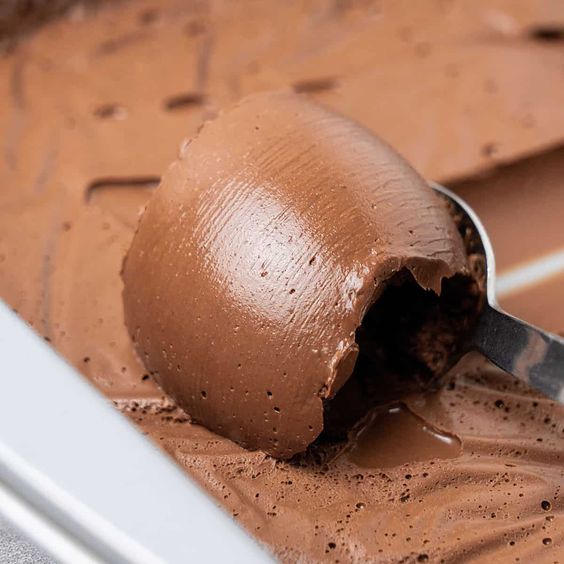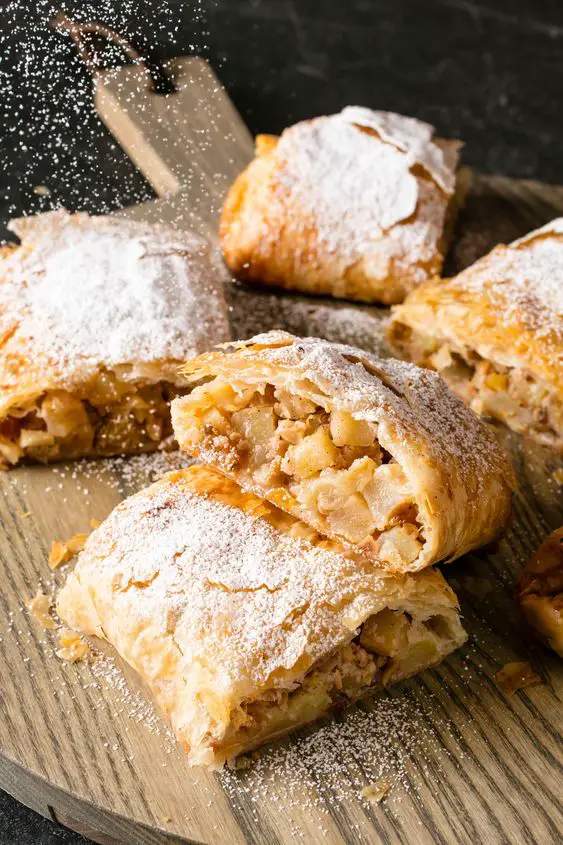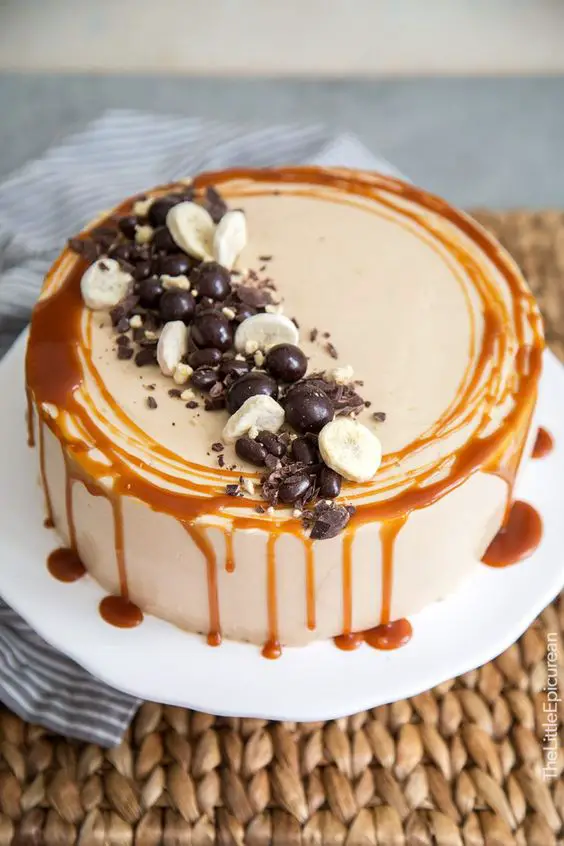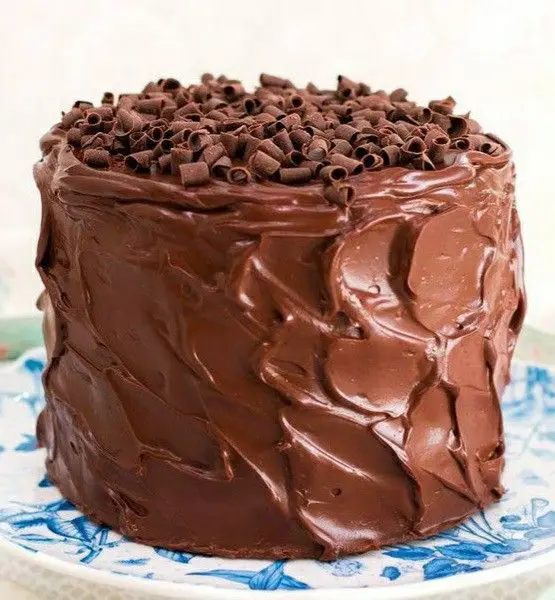Mascarpone Cream is a lusciously rich and velvety Italian dessert component that has gained international popularity for its creamy texture and delightful taste. Originating from the Lombardy region of Italy, mascarpone is a fresh cheese made from cream, resulting in a luxurious and silky-smooth consistency. Mascarpone Cream is a versatile ingredient that finds its way into numerous desserts, including classic Italian tiramisu, cheesecakes, pastries, and fruit-based treats. Its mild, slightly sweet flavor makes it an excellent canvas for both sweet and savory creations, adding a touch of decadence to any dish. Whether as a key component in a dessert recipe or as a creamy topping for fresh berries, mascarpone cream elevates the culinary experience with its creamy indulgence and unmistakable Italian charm.
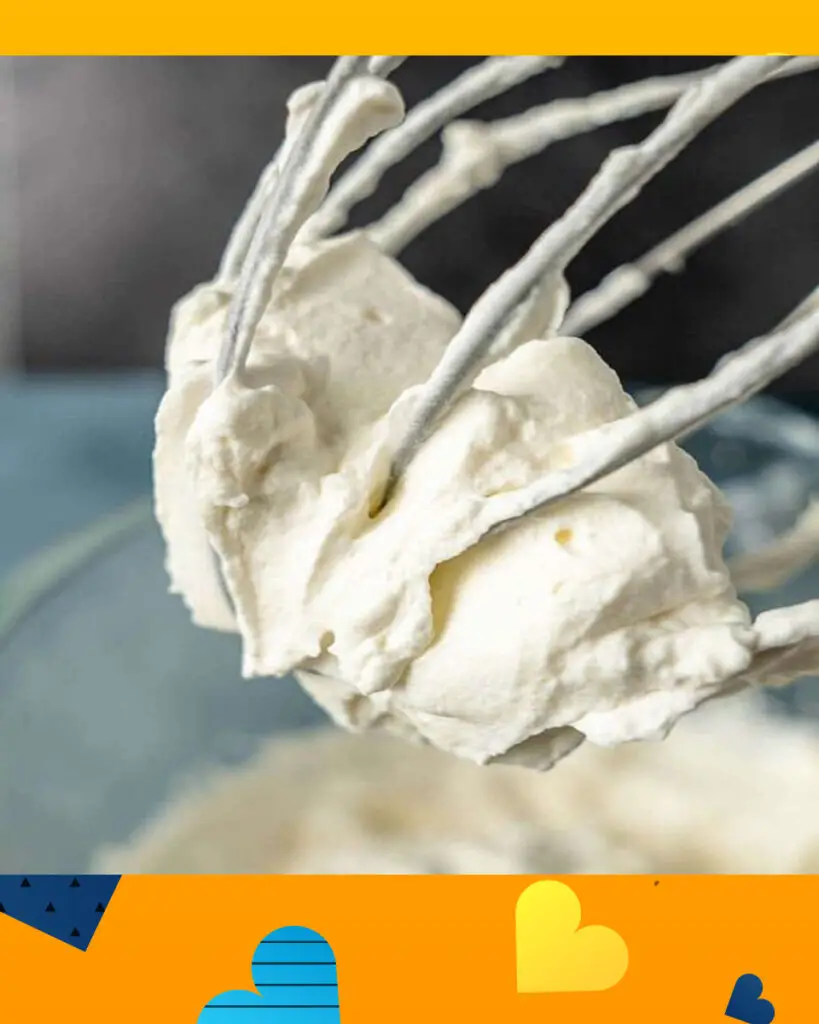
What is Mascarpone Cream?
Mascarpone Cream, often referred to simply as “mascarpone,” is a creamy, rich, and smooth Italian cheese with a consistency similar to that of cream cheese. It is made from the cream of cow’s milk, giving it a high-fat content and a luxurious, velvety texture. Mascarpone is known for its mild, slightly sweet flavor, making it a versatile ingredient used in both sweet and savory dishes.
Mascarpone is a staple in Italian cuisine and is commonly used to create delectable desserts like tiramisu, cannoli fillings, and cheesecakes. Its creamy and indulgent nature also makes it a favorite topping for fresh fruit, particularly berries, as well as a versatile ingredient in savory dishes such as pasta sauces and risottos.
This Italian cheese is prized for its ability to add richness and a delightful melt-in-your-mouth quality to a wide range of culinary creations, making it a beloved ingredient among chefs and home cooks alike.
What’s the difference between mascarpone and cream cheese?
Mascarpone and cream cheese are both creamy and mild dairy products, but they have several key differences:
1. Origin and Culture:
- Mascarpone: Mascarpone cheese is an Italian creation, traditionally made from the cream that rises to the top of cow’s milk. It is a staple in Italian cuisine and has been used for centuries in both sweet and savory dishes.
- Cream Cheese: Cream cheese, on the other hand, has American origins and is believed to have been developed in the United States in the 19th century. It is made from cow’s milk with the addition of lactic acid bacteria. Cream cheese is especially popular in North America and is commonly used in a wide range of dishes, including cheesecakes and spreads.
2. Ingredients:
- Mascarpone: Mascarpone is made exclusively from cream. It has a high fat content, typically ranging from 60% to 75%, which contributes to its rich and creamy texture. The absence of other dairy ingredients gives mascarpone its distinct flavor and texture.
- Cream Cheese: Cream cheese is made from milk and cream, often with the addition of stabilizers and emulsifiers. It typically contains a lower fat content compared to mascarpone, usually around 33% to 40%. Cream cheese also has a tangy flavor due to the lactic acid bacteria used in its production.
3. Flavor and Texture:
- Mascarpone: Mascarpone has a mild, slightly sweet flavor with a luxurious, silky-smooth texture. It is known for its delicate and creamy mouthfeel, making it an ideal ingredient for desserts and creamy sauces.
- Cream Cheese: Cream cheese has a tangy and slightly savory flavor with a denser and thicker texture compared to mascarpone. It is often used as a spread on bagels and as a base for cheesecakes.
4. Culinary Use:
- Mascarpone: Mascarpone is primarily used in Italian desserts like tiramisu and cannoli fillings. It is also a favorite ingredient for adding richness to fruit-based desserts, such as berry parfaits. Mascarpone can be used in both sweet and savory dishes, offering a creamy, luxurious element to recipes.
- Cream Cheese: Cream cheese is widely used in North American cuisine for applications like cheesecakes, frostings, and dips. It is also a popular spread for bagels and sandwiches. While it can be used in some savory dishes, it is most commonly associated with sweet recipes.
In summary, while mascarpone and cream cheese share some similarities, they have distinct origins, ingredients, flavors, and culinary applications. The choice between the two depends on the specific recipe and the desired flavor and texture characteristics.
Why you will love Mascarpone Cream?
There are several compelling reasons why you will love Mascarpone Cream:
- Luxurious Creaminess: Mascarpone Cream is incredibly creamy and velvety in texture, making it a delight to the palate. Its smooth consistency adds a touch of indulgence to both sweet and savory dishes.
- Mild and Versatile Flavor: Mascarpone Cream boasts a mild, slightly sweet flavor profile. This gentle taste allows it to complement a wide range of ingredients and dishes, making it a versatile choice in the kitchen.
- Culinary Versatility: You’ll appreciate Mascarpone Cream’s versatility in cooking and baking. It can be used in sweet desserts like tiramisu, cheesecakes, and fruit parfaits, as well as in savory dishes such as pasta sauces, risottos, and creamy soups.
- Italian Culinary Tradition: Mascarpone is a beloved ingredient in Italian cuisine, and using it in your recipes can bring an authentic touch of Italy to your meals. It’s a key component in classic Italian desserts like tiramisu and adds a luxurious quality to traditional dishes.
- Enhances Sweet and Savory Dishes: Whether you’re aiming to create a rich dessert or add creaminess to a savory sauce, Mascarpone Cream elevates the flavor and texture of your dishes, making them more enjoyable.
- Dessert Elegance: When used in desserts, Mascarpone Cream enhances the overall elegance and sophistication of the dish. It’s a favorite choice for creating show-stopping, creamy desserts that impress both the eyes and the taste buds.
- Creamy Contrast in Savory Dishes: In savory recipes, Mascarpone Cream can provide a creamy contrast to bold and savory flavors, adding a touch of luxury to pasta dishes, risottos, and vegetable-based entrees.
- Impressive Presentation: Mascarpone Cream can be used as a garnish or filling to enhance the presentation of your dishes. It can turn a simple dessert or appetizer into a culinary masterpiece.
- Easy to Work With: Mascarpone Cream is easy to incorporate into recipes. It blends smoothly with other ingredients and requires no special culinary skills to use effectively.
- Rich and Decadent: Whether you’re enjoying it in a dessert or a savory dish, Mascarpone Cream adds a rich and decadent quality to your meals that is truly satisfying.
In summary, Mascarpone Cream is beloved for its creamy texture, versatility, and ability to elevate the taste and presentation of dishes. It’s a favorite ingredient for chefs and home cooks alike, and you’re likely to fall in love with its culinary magic once you start using it in your recipes.
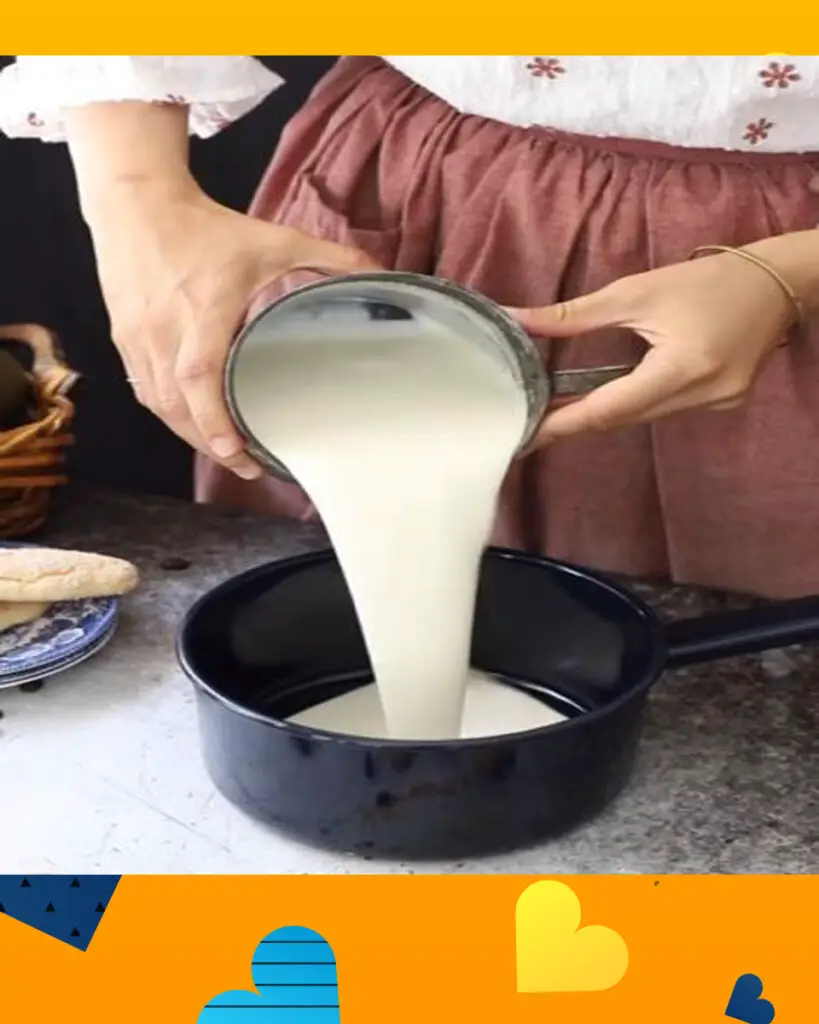
Mascarpone Cream Recipe
Ingredients:
- 8 ounces (about 1 cup) mascarpone cheese, at room temperature
- 1/2 cup heavy whipping cream
- 1/4 cup powdered sugar (adjust to taste)
- 1 teaspoon pure vanilla extract (optional)
Instructions:
1. Prepare Your Ingredients:
- Make sure the mascarpone cheese is at room temperature for easier mixing.
- Ensure that the heavy whipping cream is cold, as it whips better when chilled.
2. Whip the Heavy Whipping Cream:
- In a mixing bowl, pour in the cold heavy whipping cream.
- Using an electric mixer with a whisk attachment or a handheld whisk, whip the cream until it reaches stiff peaks. This means the cream should be thick and hold its shape when the beaters are lifted. Be careful not to over-whip, as it can turn into butter.
3. Prepare the Mascarpone Mixture:
- In a separate bowl, place the room temperature mascarpone cheese.
- Add the powdered sugar to the mascarpone cheese. The amount of sugar can be adjusted to your desired level of sweetness.
- Optionally, add the pure vanilla extract for additional flavor. This step is optional, but it enhances the cream’s taste.
4. Combine the Cream and Mascarpone:
- Gently fold the whipped cream into the mascarpone mixture. Use a spatula and make gentle, sweeping motions from the bottom of the bowl, lifting and folding the mixture until well combined.
- Continue folding until the mascarpone cream is smooth and no streaks remain. Be gentle to maintain a light and airy texture.
5. Taste and Adjust:
- Taste the Mascarpone Cream and adjust the sweetness or vanilla flavoring if needed by adding more powdered sugar or vanilla extract, mixing gently until fully incorporated.
6. Use or Store:
- Mascarpone Cream can be used immediately as a delicious topping for desserts like tiramisu, cheesecake, fruit parfaits, or as a filling for pastries.
- If not using immediately, store it in an airtight container in the refrigerator. It can be kept for 1-2 days, but it’s best when used fresh.
Note: The quantities provided here are for a basic Mascarpone Cream recipe. You can easily scale the recipe up or down based on your specific needs and the number of servings you require. Enjoy the creamy and luscious goodness of homemade Mascarpone Cream!
Nutrition information
The nutritional information for Mascarpone Cream can vary depending on the specific brand of mascarpone cheese and heavy whipping cream used, as well as any additional ingredients or variations in the recipe. However, here is a general estimate for the nutritional content of 2 tablespoons (approximately 30 grams) of Mascarpone Cream:
- Calories: Approximately 120-140 calories
- Total Fat: Around 12-14 grams
- Saturated Fat: About 7-9 grams
- Cholesterol: Approximately 35-45 milligrams
- Sodium: Less than 20 milligrams (may vary)
- Total Carbohydrates: Approximately 2-3 grams
- Sugars: Approximately 2-3 grams
- Protein: About 1-2 grams
Please note that these values are approximate and can vary based on the specific ingredients and recipe variations. Mascarpone Cream is known for its rich and creamy texture, which is primarily due to its high-fat content. While it is delicious and versatile, it is also relatively high in calories and saturated fat, so it’s best enjoyed in moderation as part of a balanced diet.
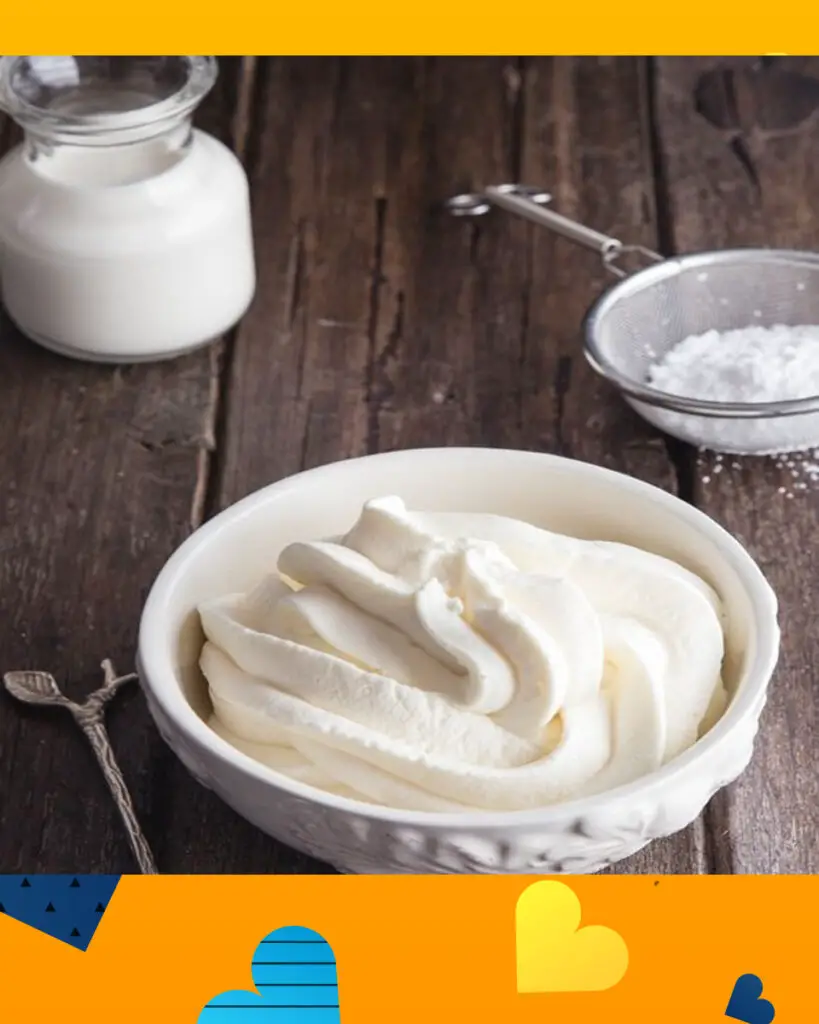
Tips to make perfect Mascarpone Cream
Creating the perfect Mascarpone Cream requires attention to detail and technique. Here are some tips to help you achieve excellent results:
1. Room Temperature Mascarpone:
- Ensure that the mascarpone cheese is at room temperature before using it. This makes it easier to mix and results in a smoother cream.
2. Cold Heavy Whipping Cream:
- Use cold heavy whipping cream for whipping. Chilled cream whips up better and faster.
3. Whipping Technique:
- Whip the heavy cream until it reaches stiff peaks. This means it should be thick and hold its shape. Be careful not to over-whip, as it can turn into butter.
4. Gentle Folding:
- When combining the whipped cream with the mascarpone mixture, fold them together gently. Use a spatula and make sweeping, folding motions to incorporate the two mixtures while maintaining the airy texture.
5. Gradual Sugar Addition:
- Add powdered sugar gradually to the mascarpone mixture, tasting as you go to achieve your desired level of sweetness. This allows you to adjust the sweetness to your preference.
6. Optional Flavorings:
- If desired, add a touch of pure vanilla extract or other flavorings like lemon zest or cocoa powder to enhance the Mascarpone Cream’s flavor. Start with a small amount and adjust to taste.
7. Avoid Overmixing:
- Be cautious not to overmix the Mascarpone Cream. Overmixing can lead to a denser texture. Stop folding as soon as the ingredients are combined.
8. Freshness Matters:
- Use fresh, good-quality mascarpone cheese for the best results. Check the expiration date and ensure it’s been stored properly in the refrigerator.
9. Use Immediately or Store Correctly:
- Mascarpone Cream is best used immediately for the freshest taste and texture. If you need to store it, keep it in an airtight container in the refrigerator for 1-2 days.
10. Application: – Mascarpone Cream is incredibly versatile. Use it as a topping for desserts like tiramisu or fruit parfaits, or as a filling for pastries and cakes. It also works well as a creamy component in savory dishes like pasta sauces and risottos.
11. Adjust for Dietary Needs: – You can modify the recipe to suit dietary preferences, such as using a sugar substitute for a lower-sugar version or using lactose-free cream for those with lactose intolerance.
By following these tips and techniques, you can create a perfect Mascarpone Cream that’s rich, creamy, and a delightful addition to a wide range of culinary creations.
How to serve
Mascarpone Cream is a versatile and delightful ingredient that can be served in various ways to enhance both sweet and savory dishes. Here are some ways to serve Mascarpone Cream:
1. Dessert Topping:
- Use Mascarpone Cream as a luscious topping for desserts like:
- Tiramisu: Layer it with ladyfingers and coffee-soaked biscuits for a classic Italian dessert.
- Fruit Parfaits: Layer it with fresh berries, granola, and honey for a fruity dessert.
- Cheesecakes: Dollop it on top of cheesecakes for an extra creamy finish.
- Pies: Serve it alongside fruit pies, tarts, or crisps.
2. Cake Filling:
- Spread Mascarpone Cream between layers of cakes. It pairs well with chocolate, vanilla, lemon, and berry cakes.
3. Pastries:
- Fill pastries like cream puffs, éclairs, or Danish pastries with Mascarpone Cream for a creamy and indulgent treat.
4. Breakfast and Brunch:
- Serve Mascarpone Cream as a topping for pancakes, waffles, French toast, or crepes. It pairs beautifully with fresh fruit and drizzled honey.
5. Cannoli Filling:
- Use Mascarpone Cream as the filling for cannoli shells. Add chocolate chips or chopped nuts for extra texture.
6. Savory Dishes:
- Incorporate Mascarpone Cream into savory recipes like pasta sauces, risottos, or mashed potatoes to add creaminess and depth of flavor.
7. Dips:
- Create a sweet dip by mixing Mascarpone Cream with honey, vanilla extract, or cocoa powder. Serve with fresh fruit, graham crackers, or pretzels.
8. Decorative Garnish:
- Use Mascarpone Cream as a decorative garnish on desserts, adding dollops or swirls for an elegant finishing touch. You can also dust it with cocoa powder or grated chocolate.
9. As a Filling:
- Fill crepes, blintzes, or rolled pancakes with Mascarpone Cream and your choice of fruit preserves or fresh berries.
10. Fruit Salad Dressing: – Mix Mascarpone Cream with a touch of honey or maple syrup to create a creamy dressing for fruit salads.
11. Coffee or Tea Companion: – Serve a small dollop of Mascarpone Cream alongside a cup of coffee or tea as a luxurious and creamy addition.
12. As a Spread: – Spread Mascarpone Cream on toast or bagels and top with sliced fruit or a drizzle of honey for a delicious breakfast or snack.
Remember to adjust the sweetness and flavorings of the Mascarpone Cream to suit the specific dish you’re serving. Whether you’re enjoying it in sweet or savory preparations, Mascarpone Cream can elevate your culinary creations with its creamy and indulgent qualities.
How to store
Properly storing Mascarpone Cream is important to maintain its freshness and quality. Here’s how to store it:
1. Airtight Container:
- Transfer the Mascarpone Cream to an airtight container with a lid. This helps prevent air from reaching the cream, which can cause it to lose its creamy texture and absorb odors from the refrigerator.
2. Refrigeration:
- Store the airtight container in the refrigerator. Mascarpone Cream should always be refrigerated to keep it fresh.
3. Use Quickly:
- Mascarpone Cream is best used within 1-2 days of making it. Freshness matters, and the cream may start to lose its quality if stored for too long.
4. Avoid Freezing:
- Avoid freezing Mascarpone Cream. Freezing can alter its texture and result in separation when thawed. It’s best enjoyed fresh from the refrigerator.
5. Keep It Covered:
- Make sure the container is tightly sealed to prevent moisture from affecting the texture of the cream. Mascarpone is sensitive to moisture and can become grainy if exposed to excessive moisture.
6. Maintain a Consistent Temperature:
- Store the Mascarpone Cream in the coldest part of your refrigerator, typically the back or bottom shelf, where the temperature remains more stable.
7. Check for Signs of Spoilage:
- Before using the stored Mascarpone Cream, check for any signs of spoilage, such as an off smell, unusual texture, or mold growth. If any of these are present, discard the cream.
8. Don’t Leave at Room Temperature:
- Avoid leaving Mascarpone Cream at room temperature for extended periods. It should only be left out briefly while serving.
Remember that Mascarpone Cream is a dairy product, so it’s important to handle and store it with care to ensure its safety and quality. Enjoy it in your favorite recipes and desserts while it’s fresh and delicious.

FAQ’s
- What’s the difference between mascarpone and cream cheese?
- Mascarpone and cream cheese are both creamy and mild, but they differ in their ingredients and origin. Cream cheese is made from cow’s milk with added lactic acid, while mascarpone is made solely from cream. Mascarpone has a higher fat content and a creamier texture than cream cheese.
- Can I substitute mascarpone for cream cheese in recipes?
- Yes, you can often substitute mascarpone for cream cheese in recipes, especially in desserts. However, be aware that mascarpone has a milder flavor and may result in a creamier texture. Adjust the quantity to taste and texture preferences.
- How do I store mascarpone cream?
- Store mascarpone cream in an airtight container in the refrigerator. Be sure to keep it sealed to prevent it from absorbing any odors in the fridge. Use it within a few days to maintain freshness.
- Why did my mascarpone cream become lumpy or curdled?
- Overmixing or adding mascarpone cream to a hot mixture can cause it to become lumpy or curdled. To avoid this, gently fold mascarpone cream into recipes, and ensure that any sauces or mixtures are at a lower temperature before incorporating mascarpone.
- Can I freeze mascarpone cream?
- Freezing mascarpone cream is not recommended, as it can change the texture and result in separation when thawed. Mascarpone is best enjoyed fresh.
Troubleshooting Tips:
- Lumpy Mascarpone Cream: If your mascarpone cream becomes lumpy, it may have been added to a mixture that was too hot. To fix it, gently whisk or stir the cream until smooth. Avoid overmixing.
- Curdled Mascarpone Cream: If your mascarpone cream appears curdled, it may have been overmixed. To correct this, let it come to room temperature and then gently whisk it to regain a smoother consistency.
- Separated Mascarpone Cream in Desserts: If you find that mascarpone cream separates when used in desserts like tiramisu, make sure to fold it into other ingredients gently. If the mascarpone is too cold, allow it to come to room temperature before incorporating.
- Avoid High Heat: When using mascarpone in recipes, avoid exposing it to high heat for an extended period, as this can lead to separation or curdling. Add it toward the end of cooking when making sauces or risottos.
- Use Fresh Mascarpone: Start with fresh and well-stored mascarpone. Check the expiration date and ensure it has been properly refrigerated to maintain its quality.
By following these FAQs and troubleshooting tips, you can work with mascarpone cream more effectively and enjoy its creamy goodness in your culinary creations.
Happy baking!


